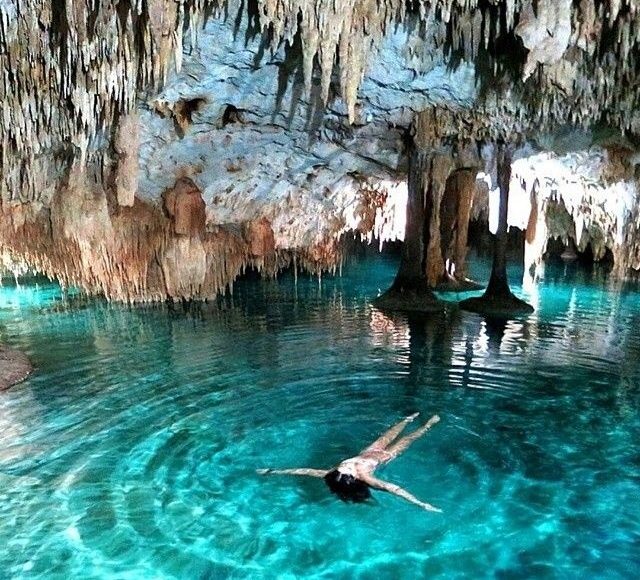#26 — Thy following information can be found on page 123 of Ellen Russell Emerson’s book. “INDIAN MYTHS”:
“…It is to the Cubans we are indebted for the following version of man’s origin:
“It was from the depths of a deep cavern in the earth that mankind issued. There were two apertures to this cavern, one large and the other small: out of the large aperture passed the men who are of tall, majestic proportions; and from the small issued the men of diminutive size…”
*******
#27 — The following interesting information concerning the Aztecs can be found on pages 91-93 of “AMERICAN HERO-MYTHS”, by Daniel G. Brinton:
“All through Mexico and Central America this legend of the Seven Sons, Seven Tribes, and Seven Caves whence they issued, or the Seven Cities where they dwelt, constantly crops out. To that land the Aztecs referred as their former dwelling place. It was located at some indefinite distance to the north or northwest — in the same direction as Tollan. The name of that land was significant. It was called the White or Bright land, Aztlan.
“In its midst was situated the mountain or hill Colhuacan the Divine, Teoculhuacan. In the base of this hill were the Seven Caverns, Chicomoztoc, whence the seven tribes with their respective gods had issued… those gods including Quetzalcoatl, Huitzilopochtli, and the Tezeatlipocas. There continued to live their mother, awaiting their return.
“The lord of this land and the father of the seven sons are variously and indistinctly named.
One legend calls him the White Serpent of the Clouds, or the White Cloud Twin, Iztac Mixcoatl. Whoever he was we can hardly mistake the mountain in which or upon which he dwelt. Colhuacan means the ‘bent or curved mountain’. It is none other than the Hill of Heaven, curving down on all sides to the horizon; upon it in all times have dwelt the gods, and from it, they have come to aid the men they favor.
“Absolutely the same name was applied by the Choctaws to the mythical hill from which they say their ancestors first emerged into the light of day. They call it Nane Waiyah, ‘the Bent or Curved Hill’. Such an identity of metaphorical expression leaves little room for discussion.”
“For this reason Quetzalcoatl’s statue, or one of them, was in a reclining position and covered with wrappings, signifying that he was absent, ‘as of one who lays him down to sleep and that when he should awake from that dream of absence, he should rise to rule again the land.’
“He was not dead. He had indeed built mansions underground, to the Lord of Mictlan, the abode of the dead, the place of darkness, but he himself did not occupy them. Where he passed his time was where the sun stays at night. As this, too, is somewhere beneath the level of the earth, it was occasionally spoken of as Tlillapa, ‘The Murky Land’, and allied therefore to Mictlan.
“Caverns led down to it, especially one south of Chapultepec, called Cincalco, ‘To the Abode of Abundance,’ through whose gloomy corridors one could reach the habitation of the sun and the happy land still governed by Quetzalcoatl and his lieutenant Totec.
“But the real and proper names for that land were Tlapallan, ‘the Red Land’, and Tizapan, ‘the White Land’, for either of these colors is that of the sunlight. It was generally understood to be the same land whence he and the Toltec’s had come forth in ancient times; or if not actually the same, nevertheless very similar to it’… ”
Pages 206-207 of Franklin Folsom’s book, “EXPLORING AMERICAN CAVES“, carries the following related information:
“It is interesting to speculate that archeologists, working in caves of the United States or northern Mexico, may one day complete a chapter in the history of the Aztecs. These Amazing people, who ruled much of Mexico in Columbus’ day, believed that the ancient and original home of their tribe was in seven caves.. far to the north.
“There is ample evidence that Aztecs did, in fact, move southward into the high valley of Mexico. It would be an Indian feather in some speleologist’s cap if he could solve the mystery of the longitude and latitude of caverns that the Aztecs did use in their migrations southward. Archeologists may rise up in careful academic wrath and say that no such find can ever be made, but scholars were not impressed when Heinrich Schliemann set out to find the city of Troy with not much more than Homer to go by. Amazing things have turned up in American caves…”
*******
